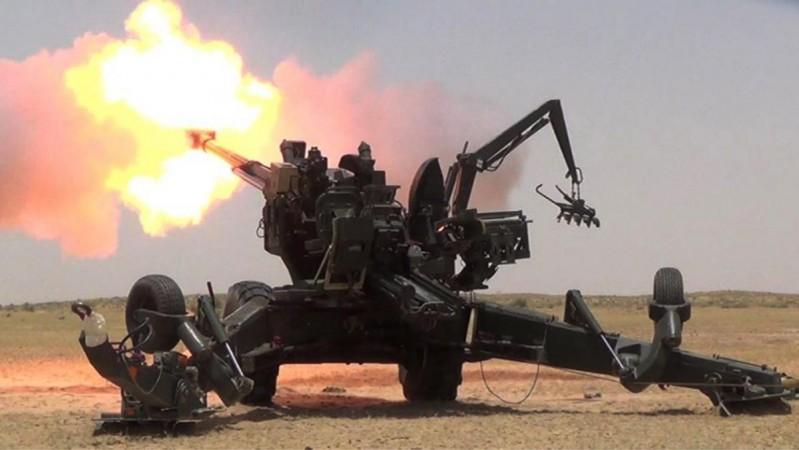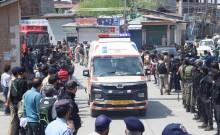
Today, as India celebrates Gunners' Day, the nation pays homage to the Regiment of Artillery, one of the Indian Army's most formidable combat arms. This day commemorates 28 September 1827, when the first artillery unit of the Bengal Presidency, the 5 (Bombay) Mountain Battery, was raised, laying the foundation for India's modern artillery. From the Battle of Kargil in 1999, where Bofors guns turned the tide by pounding enemy positions on treacherous heights, to the 1971 Indo-Pak war, where artillery firepower shaped decisive victories, the Gunners have been the silent yet thunderous guardians of India's frontiers.
On this solemn occasion, Army Chief General Upendra Dwivedi, in his message to the regiment, highlighted the "pivotal role of artillery in modern, technology-driven warfare," calling for "rapid modernization, self-reliance in precision strike capabilities, and seamless integration of sensors, shooters, and decision-making nodes to achieve battlefield dominance." His remarks underline an urgent imperative: the artillery must evolve swiftly to match the velocity of contemporary and future conflicts.
"Artillery is not just about firepower, it is about decisive, coordinated, and technologically enabled dominance." - General Upendra Dwivedi, Chief of Army Staff.
The Current State: Strengths and Gaps
The Indian Army's artillery comprises nearly 280 regiments, fielding a wide spectrum of guns, howitzers, multi-barrel rocket launchers, and missile systems. In recent years, modernization has gained traction after decades of stagnation. The induction of K9 Vajra-T self-propelled howitzers, indigenously upgraded Dhanush guns, and the advanced Pinaka multi-barrel rocket systems marks a revival of indigenous production. The Advanced Towed Artillery Gun System (ATAGS), a 155mm/52 caliber gun developed under the Make in India initiative, is undergoing trials and will be a game-changer when fully operationalized.
Yet, challenges remain stark. Nearly 40% of the artillery inventory consists of vintage 105mm and 130mm guns, many dating back to the 1970s and 80s. While upgrades extend their utility, they cannot match the precision, range, and automation of modern systems. The Mountain Strike Corps, critical for high-altitude warfare against China, still lacks adequate numbers of lightweight, high-mobility artillery platforms suited for rugged terrains.
A report by the Parliamentary Standing Committee on Defence (2024) noted that India currently operates only half the artillery fire units required for optimal deterrence along the northern borders, a gap that could prove critical in a two-front contingency involving both China and Pakistan.
"Firepower wins battles, but only modern, networked firepower wins future wars." - Former DG Artillery, Lt Gen P. Ravi Shankar (Retd)
Emerging Future: Tech-Driven Firepower
The next decade will redefine artillery warfare globally, and India cannot afford to lag. Conflicts like the Russia-Ukraine war have showcased the transformational role of precision-guided munitions (PGMs), loitering munitions, and unmanned systems integrated with real-time data from satellites, drones, and AI-driven analytics. Future battlefields will demand artillery that can not only hit targets with pinpoint accuracy but also operate seamlessly in an electronic warfare-heavy environment.
Indian efforts are underway to adapt to this paradigm. The Pinaka Mk-II system now boasts a range of 75 km, while indigenous PGMs are being co-developed by the DRDO and private sector players. The IAI-HAL collaboration on loitering munitions and the BEL-developed battlefield surveillance systems are steps toward a sensor-shooter ecosystem. However, scaling production and integrating these into a cohesive digital fire-control network remain work in progress.
Consider the following comparative metric:
China's PLA Rocket Force reportedly fields over 2,000 long-range rocket systems, many with ranges exceeding 250 km, integrated with a real-time reconnaissance-strike complex.
In contrast, India's longest-range conventional artillery system, the Pralay tactical missile, has a range of 150-500 km, but its deployment is still nascent and numbers are limited.
The takeaway is clear: India must bridge this asymmetry swiftly by combining indigenous innovation with strategic international partnerships.
"The side that masters the integration of sensors, AI-driven analytics, and precision strike artillery will dominate future wars." - RAND Corporation Report, 2023
Lessons from Ukraine: Imperatives for Indian Artillery
The Ukraine conflict has served as a live laboratory for artillery warfare, offering critical lessons for India:
1. Survivability through Mobility : Static artillery positions are death traps in the era of drones and counter-battery radars. Systems like K9 Vajra-T and lightweight 155mm guns must be deployed in greater numbers for "shoot-and-scoot" tactics.
2. Drone-Artillery Integration Ukraine's success in pairing drones with artillery for real-time targeting highlights the need for India to rapidly integrate UAVs into artillery regiments.
3. Mass Fire vs. Precision Fire Balance : While precision strikes save ammunition, mass fire remains essential for psychological and suppression effects. India must maintain this balance through scalable PGMs.
4. Electronic Warfare Resilience - GPS spoofing and jamming cripple modern systems. Indigenous secure navigation and hardened communication protocols are non-negotiable.
Future Capability Imperatives
To achieve credible dominance, the Indian artillery must focus on five core imperatives:
1. Modernization at Scale
India must accelerate the replacement of legacy 105mm and 130mm systems with modern 155mm/52 caliber platforms like ATAGS. Current annual induction rates must double by 2028, requiring both public and private sector capacity expansion.
"Delays in modernization today translate into vulnerabilities tomorrow." - CAG Defence Audit, 2023
2. Precision and Smart Munitions
Currently, only 15% of Indian artillery ammunition is precision-guided, compared to 65% for NATO forces. Increasing this to 40% by 2030 is essential. Indigenous PGMs like the Excalibur-type 155mm shells must be prioritized, along with collaborations with global leaders like Israel and France.
3. Digital Fire Control and AI Integration
The artillery must transition from manual fire direction centers to AI-driven digital networks that link satellites, drones, radar feeds, and gun units in real time. This would reduce sensor-to-shooter time from 20 minutes to under 5 minutes, a critical threshold in modern conflict.
"Speed is as decisive as firepower, the first to strike accurately is the first to win." - Gen David Petraeus, US Army (Retd)
4. Indigenous Industrial Base
Self-reliance in artillery production is vital. While K9 Vajra-T assembly in India is a success, over 40% of critical components are still imported. A defense industrial policy must incentivize domestic manufacture of barrels, breech blocks, and advanced electronics, reducing import dependency to below 20% by 2032.
5. High-Altitude and Expeditionary Artillery
With the Ladakh standoff, the need for lightweight, air-portable systems has intensified. DRDO must prioritize projects like M777 ultra-lightweight howitzer equivalents, while private players should develop hybrid electric mobility platforms for mountainous terrain.
Geopolitical Significance
A modernized artillery arm is not just a tactical necessity; it is a strategic signal. With India's two adversaries China and Pakistan engaged in military-technological collusion, India's artillery modernization sends a message of credible deterrence. It also strengthens India's role as a net security provider in the Indo-Pacific, enhancing partnerships with nations like Vietnam, the Philippines, and Australia, who are watching India's trajectory closely.
The upcoming Quad Security Dialogue is expected to include discussions on joint artillery exercises and technology exchanges, indicating a future where Indian artillery could operate in coalition frameworks.
Vision 2035: Artillery as a Strategic Force
By 2035, the Indian Army's artillery must evolve into a digitally networked, precision-dominant, and fully indigenous force, capable of influencing not just tactical battles but also strategic outcomes. This vision demands bold leadership, sustained funding, and relentless innovation.
"In future wars, artillery will not just support maneuver it will shape the battlespace and dictate the tempo." - US Army Futures Command White Paper, 2024
Honoring the Past, Forging the Future
On this Gunners' Day, as the thunder of ceremonial salutes echoes across India, it is worth reflecting that the artillery's past glories must serve as inspiration, not complacency. The regiment that once powered the victories of Kargil and 1971 now faces the monumental task of reinventing itself for a battlefield where machines think, drones swarm, and decisions are made in milliseconds.
The words of General Upendra Dwivedi resonate powerfully: "The future belongs to those who prepare today." As India looks to its borders and beyond, its artillery must stand ready not just as the God of War, but as the Guardian of Tomorrow.
[Major General Dr. Dilawar Singh, IAV, is a distinguished strategist having held senior positions in technology, defence, and corporate governance. He serves on global boards and advises on leadership, emerging technologies, and strategic affairs, with a focus on aligning India's interests in the evolving global technological order.]

















